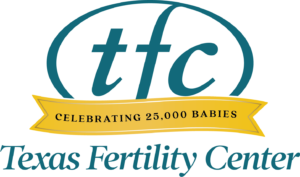One of the most difficult discussions that we have with patients concerns what they should do when conventional fertility treatments have failed or are not a good option. While some patients find themselves in this situation after trying to conceive unsuccessfully with ovulation induction or even in vitro fertilization, many more patients are actually presenting to our office at their first visit with a very poor prognosis for success before they even attempt fertility treatment.
Some of these couples have chosen to delay childbearing until the woman is in her late 30s or even early to mid-40s, while others come to see us after undergoing treatment with therapies that have left them with a markedly diminished number of eggs. Due to tremendous advances in cancer treatment, many women are now surviving their disease – and they rightfully desire fertility after winning their battle. Unfortunately, surgical procedures for endometriosis or other ovarian pathology that result in removal of one or both ovaries, or chemotherapy that destroys eggs, make the goal of having a child much more challenging.
When we see these patients, we rapidly assess their ovarian reserve in order to determine how many eggs we have left to work with. This is accomplished through a combination of hormone testing (such as Day 3 FSH and estradiol and/or anti-mullerian hormone levels) and ultrasound measurement of ovarian size. Women with diminished reserve who desire children have a very difficult dilemma in front of them; continue to try conventional therapies – recognizing that they have a very low chance for pregnancy, move on to donor oocytes, or consider adoption.
Many couples initially see little difference between donor oocytes and adoption. Adoption may actually seem “more fair”, as the child has no genetic attachment to either member of the couple. In fact, there are profound differences between the two alternatives which may or may not be important to the couple. Adoption offers a higher chance for success (90+% vs. 60-70% for donor oocytes), and it also offers many options, including the opportunities for international adoption, adopting a child who is racially or ethnically different from the parents or adopting a child who is economically disadvantaged, or even physically or emotionally disabled. On the other hand, adoption is typically more expensive than donor oocytes, and can also involve extensive legal proceedings.
Oocyte donation also offers many advantages. Unlike women who make the difficult choice to place their babies for adoption, all oocyte donors are screened extensively for infectious, genetic, and psychological conditions, according to FDA guidelines. Donors are chosen by the recipient couple, after extensively reviewing their medical history, pictures, and biography. In addition, donor oocytes in Texas are governed by state property statutes. Therefore, once eggs are retrieved from the donor, they belong to the recipient couple – the donor irrevocably relinquishes all legal rights and cannot change her mind at a later date. The recipient woman then carries the baby, and accepts responsibility for obtaining good prenatal care and avoiding behaviors such as alcohol or drug abuse, that could adversely affect her baby’s health. In addition, the recipient couples’ names are on the birth certificate; no additional legal procedure is required to make them the legal parents of the child.
Both adoption and donor oocytes represent excellent options for couples seeking parenthood. There are, however, significant differences between them. Our job, at Texas Fertility Center, is to provide patients with the information that they need to make the decision that is right for them and their family in a caring, non-judgmental manner.



